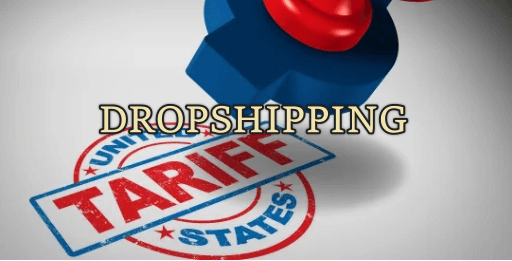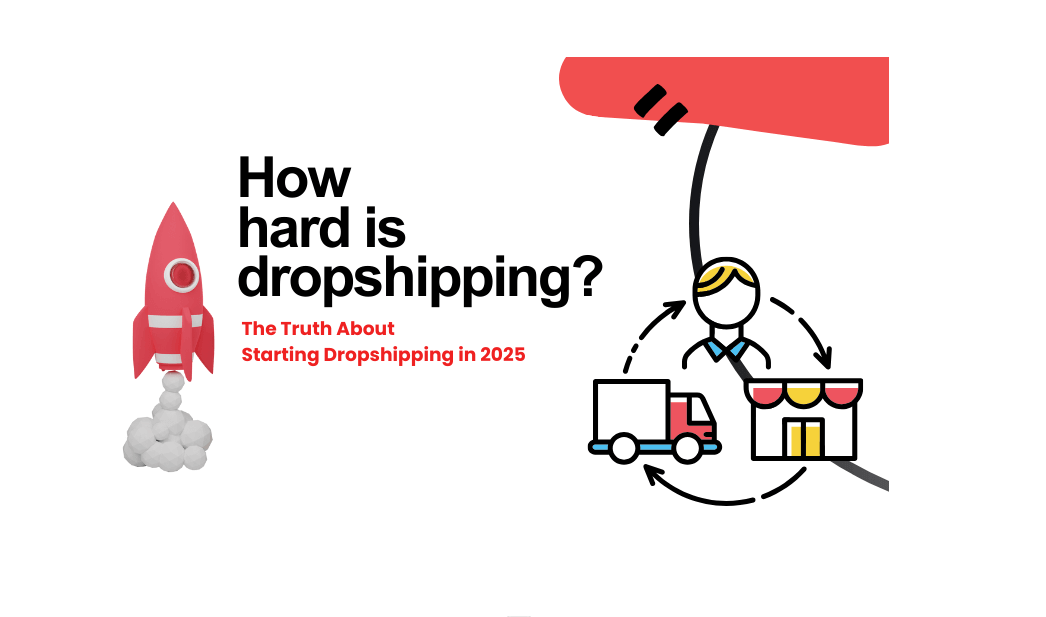If you’re thinking about starting a dropshipping business, you’ve probably heard two extremes: “Dropshipping is dead!” or “It’s the easiest way to make money!”
But what is the truth?
Well, the truth is somewhere in between. As someone who has helped launch over 50 successful dropshipping stores and watched hundreds more fail, I can tell you it’s harder than it was in the past. Yet still viable if you know what you’re doing.
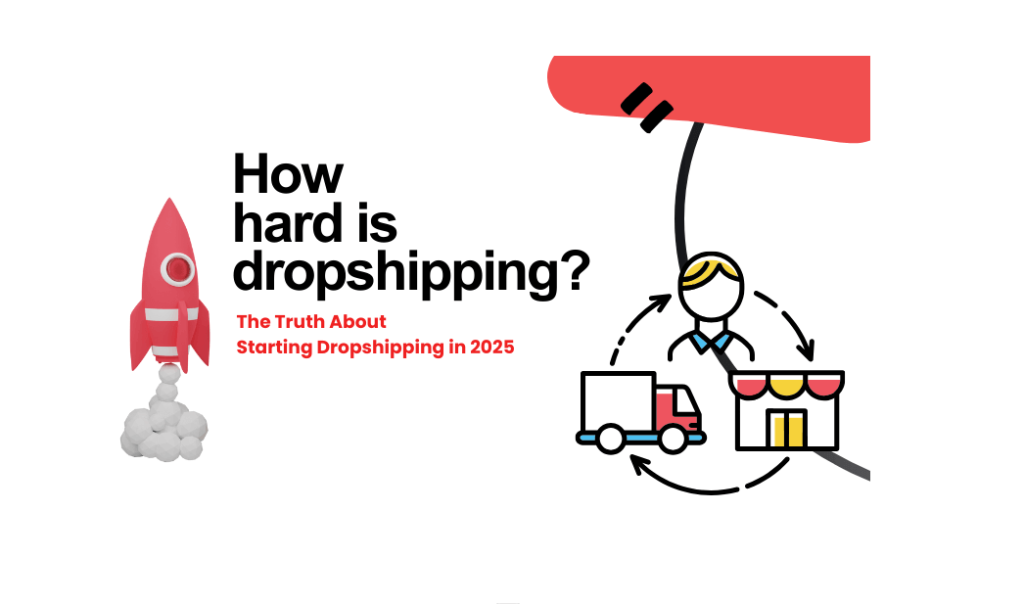
Read on to know what’s changed in 2025, what’s working now, and how you can still make dropshipping profitable.
How Hard Is Dropshipping in 2025?
The unfiltered truth: MUCH harder than ever.
Recent industry statistics reveal that in the last few months, dropshipping businesses had a success rate of around only 10%-20%. In fact, new drop shipping businesses are failing at a rate of around 85-95%.
This shows how difficult it is becoming to enter dropshipping with the goal of long-term success.
On the upside, however, platforms likeShopify, DSers, and Spocket are simplifying automation and supplier management. And this is making dropshipping easier as well. But just for those who are willing to adapt, test, and refine their strategies.
So, before you start dropshipping in 2025—remember that the days of setting up a generic store and making instant profits are long gone.
Why Dropshipping Is So Difficult in 2025?
The dropshipping business model has made some radical transformations in 2025, with a perfect storm of difficulties for both new and veteran store owners.
Let us take a closer look at the most important reasons that are making dropshipping difficult in 2025:
Reason 1: Greater Tariffs and Reduced Profits
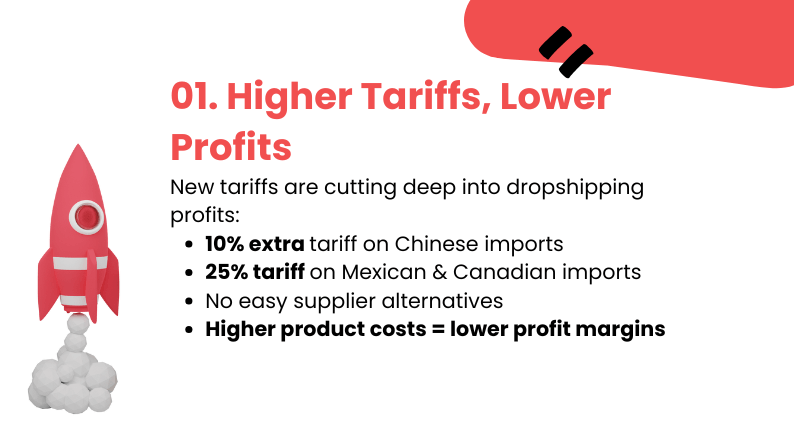
The dropshipping business model is unprecedentedly pressured by the latest trade policies. The Trump government’s introduction of an extra 10% on Chinese imports and a high 25% on Mexican and Canadian imports (enacted on March 4, 2025) has hard-hit the dropshipping community.
For those dropshippers that are particularly dependent on Chinese supply chains, these new tariffs literally take a bite out of already slim profit margins. Worse still is that Mexico—once thought of as a feasible alternative supplier—now also comes with even higher tariffs, eliminating what might have been a tactical switch for most store owners.
For newcomers asking how hard it is to start dropshipping in 2025, these tariff changes represent a fundamental restructuring of the economic model that previously made dropshipping attractive. Established stores are facing equally difficult decisions about whether to shift to domestic suppliers (with higher base costs) or explore entirely new business models altogether.
However, policies are constantly changing, and it is uncertain whether these tariff regulations will be lifted in the future. Staying informed is key to seizing opportunities in time.
Reason 2: Elimination of the $800 De Minimis Exemption
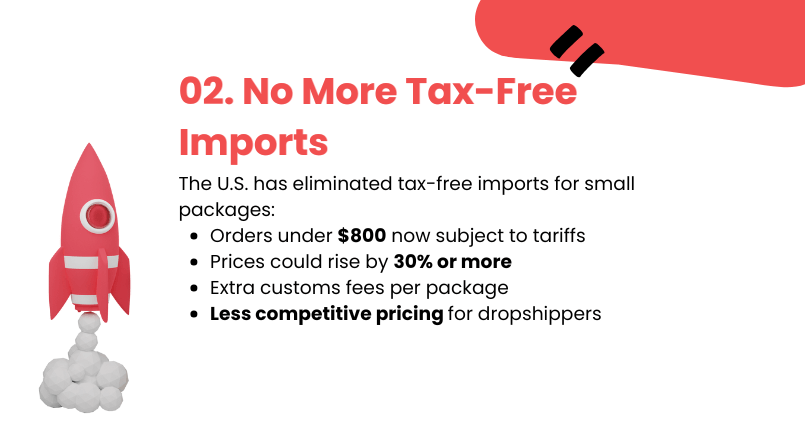
The U.S. is removing tax-free imports for small packages. Small packages worth less than $800 were previously exempt from tariffs in the U.S.—which was advantageous for platforms such as Temu and Shein. The exemption is, however, being eliminated in early 2025.
This adjustment raises the price of goods imported from China, with some estimates suggesting a 30% increase in price and extra per-package charges.
For dropshippers, this translates to increased shipping fees and lower competitiveness. Most will have to transition to foreign warehouses or change their pricing models. This action also falls in line with international regulatory moves to clamp down on ultra-low-cost imports that destabilize local markets.
Reason 3: Stricter Oversight from E-commerce Platforms
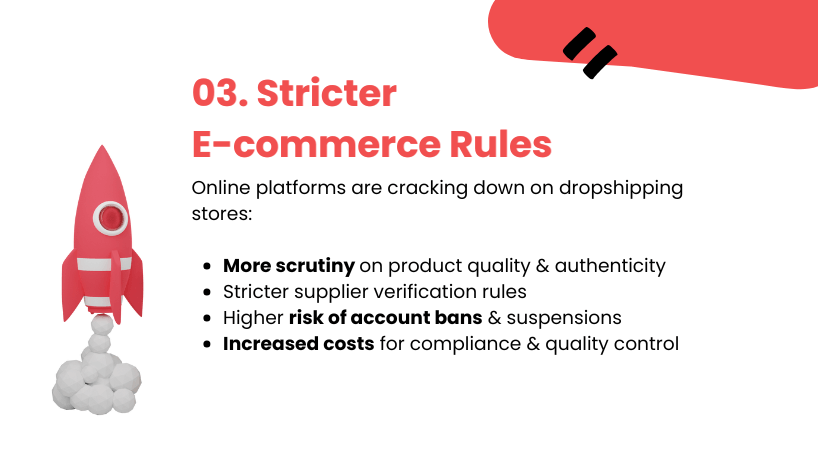
Major players such as Shopify, Amazon, and others are tightening against low-quality and counterfeit products. Higher scrutiny means that dropshippers now need to keep their products at par or else face account suspensions.
Compliance is increasingly becoming an issue. Platforms are insisting on improved supplier authentication, transparent return policies, and quicker shipping. Dropshippers now need to spend more on quality control and building relationships with dropshipping supplier to remain competitive.
In other words, turning dropshipping stores into brands is our future direction.
Reason 4: Rising Ad Costs
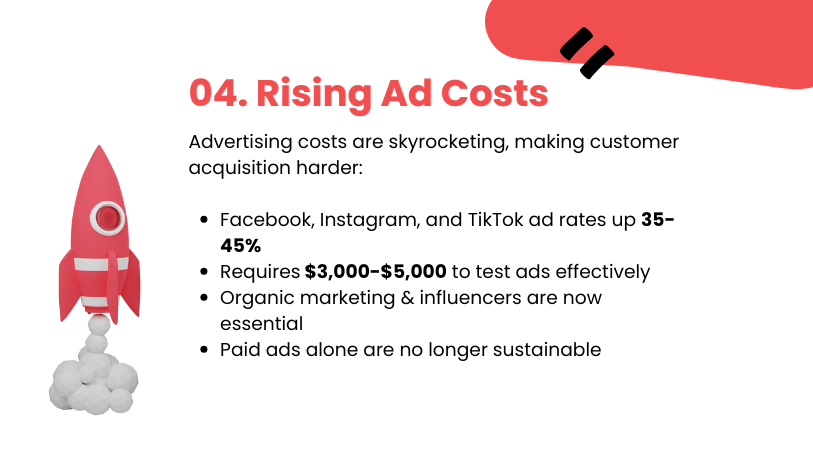
Marketing is among the largest costs of dropshipping, and ad spend is on the rise in 2025. Social media platforms such as Facebook, Instagram, and TikTok have raised ad rates, by about 35-45% year-over-year making it costlier to acquire customers. Relying entirely on paid advertisements is no longer a viable option.
Most successful dropshippers are now concentrating on organic marketing, influencer collaborations, and content-based sales to decrease dependence on costly advertisements. However, for new dropshippers—such Ad expenses are an insurmountable hurdle. While successful stores once could launch with $500-1,000 in advertising budget, effective testing now often requires $3,000-5,000 minimum—before generating meaningful revenue.
Reason 5: Shifts in Consumer Shopping Habits & Higher Expectations
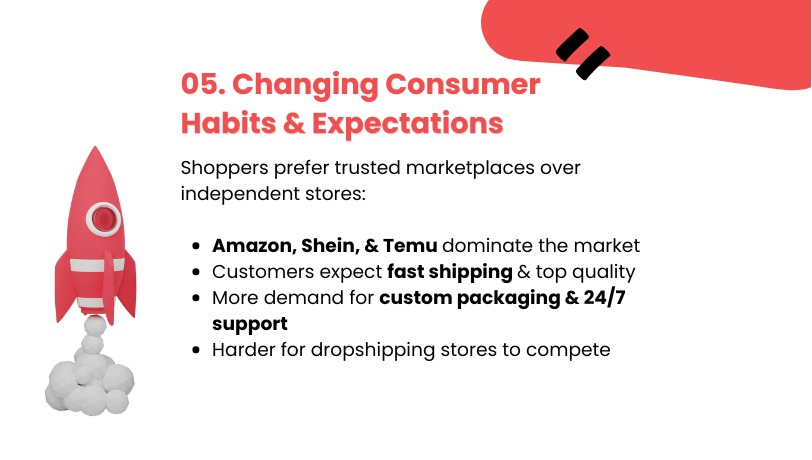
The 2025 e-commerce environment poses another significant twofold challenge for dropshippers: consumers are moving to established marketplaces and have built radically higher expectations for shopping.
Shoppers are now increasingly favoring buying from well-known platforms such as Amazon Prime, Shein, and Temu over independent stores. These established marketplaces have significant benefits that dropshippers struggle to match:
- Built-in buyer protection.
- Verified reviews at scale.
- Hassle-free returns.
- Real-time order tracking.
This shift to established marketplaces has significantly diminished the number of customers who have confidence in making a purchase through solo dropshipping websites.
At the same time, online consumers are expecting:
- Lightning fast shipping.
- Excellent product quality.
- Custom packaging.
- 24/7 support.
Dropshipping stores based on foreign suppliers struggling to meet these expectations. The fundamental economics of dropshipping—minimizing upfront investment and inventory costs—directly conflicts with meeting these standards without significant operational changes.
To compete, dropshippers need to enhance branding, logistics, and quality assurance. Or accept higher return rates, bad reviews, and low repeat business that will eventually make the dropshipping business unsustainable in 2025.
In this regard, Dropshipman can meet the above requirements—why not give it a try?

Find Better Suppliers for Products,
Fulfill All your Order.
Reason 6: Excessive Market Saturation and Competition
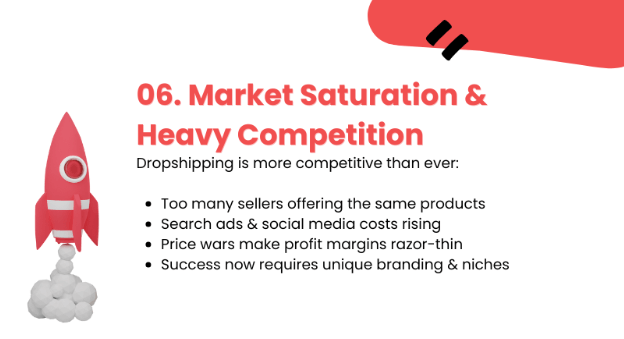
The low entry threshold of dropshipping has made history’s worst market saturation a reality in 2025. Thousands of new sellers flood the market every month, with most competing for exactly the same trending products identified using the same research tools.
This is a paradox where otherwise “hot” products get instant destructive competition.
Even historically profitable niches—pet accessories, home decor, exercise equipment—now have established players with efficient operations that are difficult for entrants to disrupt. The math is sobering:
- Search ads become more expensive as more sellers compete on the same keywords.
- Social media algorithms favor established players with regular traffic.
- Buyers grow more wary of new stores.
- Product differentiation becomes almost impossible with similar supplier catalogs.
- Price wars erode already wafer-thin margins.
Success today requires finding genuine competitive advantages through untapped micro-niches, exclusive deals, or truly differentiated branding—a world away from the “easy money” narrative that initially made dropshipping attractive.
Is Dropshipping Dead?
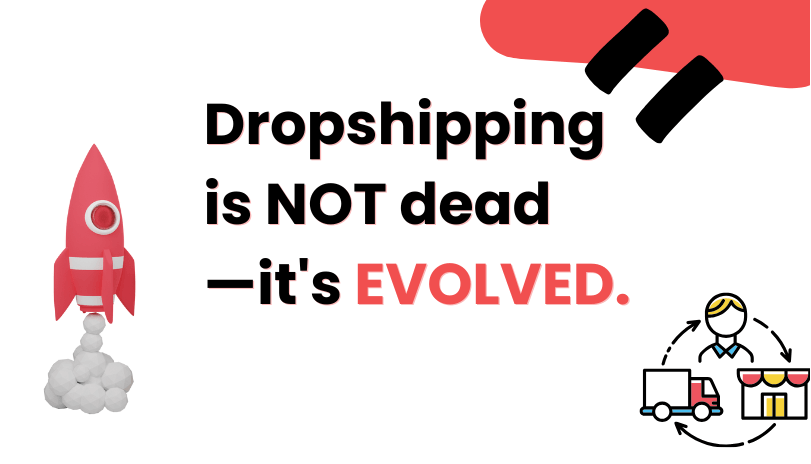
Contrary to what armchair pundits say, dropshipping in 2025 is not dead—it’s EVOLVED. Although the get-rich-quick days are definitely over, dedicated entrepreneurs with smart strategies continue to create successful ventures. The business model has just matured from a quick-money scheme to a genuine business demanding real entrepreneurial skills.
What died is the effort-free method: spewing out bland products onto template stores and hoping to make immediate profits. For those asking how hard is it to get into dropshipping 2025, the answer is straightforward: much harder than it was before—but perhaps with potentially greater rewards for those willing to adapt to changing marketplace conditions.
And that is not what I’m saying, despite increasing challenges, the global dropshipping market is projected to reach a whopping $243.42 billion by 2026, showing steady growth.
How to Succeed in Dropshipping?

Source: Unsplash
Succeeding in dropshipping’s tough 2025 environment involves a strategic approach far beyond the simplistic methods of yesteryear. Here are the most successful strategies currently being used by profitable dropshippers:
Strategy 1: Hyper-Niche Selection and Specialization
Broad-based product selection has proven to be a formula for disaster. To be successful, dropshippers now need to build deep specialization within extremely narrow niches where they can deliver real value independent of the product itself. This involves:
- Choosing niches in which you have firsthand knowledge or interest so you can provide real content creation.
- Targeting underserved customer niches with unique pain points.
- Developing content that reflects real expertise (videos, whitepapers, comparison tools).
- Becoming a trusted advisor versus another peddler.
Example: Rather than selling broad fitness equipment, specialize in specialized recovery tools for long-distance runners with content developed by real athletes.
Strategy 2: Strong Supplier Relationships
The basis of the dropshipping model—supplier relationships—needs to be overhauled. Top operators now:
- Build direct connections with several suppliers instead of being dependent on AliExpress.
- Negotiate exclusive product versions or customized packaging.
- Arrange improved shipping deals and priority handling.
- Apply quality control mechanisms, even for dropshipped items.
- Build backup suppliers for every product to avoid stockouts.
These take time to establish but generate lasting advantages that can’t be readily copied by rivals.
Strategy 3: Diversified Marketing Beyond Paid Ads
With advertising prices at record levels, top-performing dropshippers are diversifying their customer acquisition efforts by:
- Establishing organic social media presence on channels where their target market exists.
- Creating useful content that attracts their ideal customer organically.
- Building lists and executing complex email marketing funnels.
- Working with micro-influencers to promote more cheaply and authentically.
- Executing strategic SEO for long-term traffic building.
- Pursuing affiliate partnerships with complementary, non-competing organizations.
This diversification minimizes reliance on ever-more costly paid advertising while creating more lasting customer relationships.
Strategy 4. Enhanced Fulfillment Models
The traditional direct-from-supplier shipping model has become challenging in fulfilling customers’ expectations. So, smart dropshippers are now using hybrid methods:
- Using domestic warehousing for best-sellers with the dropship model reserved for niche-specific items.
- Partnering with 3PL (third-party logistics) suppliers to speed up delivery.
- Using improved tracking and delivery forecast systems.
- Creating transparent communication about shipping expectations.
- Choosing suppliers by fulfillment reliability rather than purely by product cost.
These improvements address the delivery speed expectations that are becoming standard for online shoppers.
Strategy 5. Data-Driven Operations
Hobby dropshipping used to depend greatly on intuition and trends. But serious dropshippers now using advanced data analysis:
- Monitoring detailed metrics other than raw sales levels (COGS, CAC, CLV, etc.).
- A/B testing for all corners of the operation (product cataloging, website templates, email campaigns).
- Proper inventory forecasting even for dropshipped items.
- Scrutinizing the supplier performance metrics very closely.
- Studying customer behavior patterns to make targeted adjustments.
This methodology enables ongoing refinement instead of the boom-bust pattern that characterized previous dropshipping businesses.
Strategy 6. Branding as a Main Strategy
Successful dropshipping businesses are also converting their Shopify Plus Stores into mobile apps to build deeper customer relationships. A mobile app builder for Shopify like Appbrew helps reinforce brand identity with seamless shopping experiences, personalized push notifications, and deep personalization that customers love and keep coming back boosting AOV by 20%.
A change perhaps biggest of all: successful dropshippers now tend to focus more on creating distinguishable brands as opposed to anonymous store fronts:
- Establishing consistent visual identity and brand voice.
- Producing custom packaging or inserts even for dropshipped items.
- Creating communities around their products and niche.
- Rolling out customer loyalty programs.
- Gathering user-generated content and reviews.
This brand emphasis creates defensible market positions that can’t be undercut on price alone.
Strategy 7. International Market Expansion
And finally, as domestic markets become more competitive, successful dropshippers are now turning to international opportunities:
- Researching and targeting less dropshipping-saturated countries.
- Proper localization (beyond translation).
- Understanding international shipping and customs regulations.
- Customizing product selection based on regional preferences.
- Developing region-specific marketing campaigns.
This global approach expands the potential customer base while reducing reliance on oversaturated markets.
Expert Insights
1. Start Small, Scale Smart
Expert Take: Focus on a few high-demand, low-competition products before scaling.
The biggest blunder that new dropshippers commit is to start with dozens of products. Professionals recommend starting small with 5-10 well-researched products instead of hundreds of products that have not been tested. It reduces financial risk and eases marketing. As per Digital Commerce 360’s research, dropshippers who focused on fewer than 10 starting products were 3.7 times more likely to stay operational after one year.
2. Build a Brand, Not a Store
Expert Take: Build a brand story that will resonate with your target audience to differentiate.
59% of consumers prefer buying products from brands they can identify, based on a report issued by Nielsen. Dropshipping isn’t the after-the-fact resale of random products—it’s an act of building a legitimate brand. The best sellers produce their own brand packaging, branded photo shoots, and messaging frameworks as ways of establishing credibility for their clients. Emotional connection with a brand is 2x more predictive of future purchases compared to satisfaction ratings.
3. Select a profitable niche
Expert Take: Niche markets bring back repeat buyers for more.
Niche dropshipping shops have 33% higher conversion compared to regular stores, as shown in Oberlo studies. Instead of chasing over-saturated trends, experts go for evergreen niches like pet supplies, health & wellness, or eco-friendly products—markets with high, repeat-purchaser potential.
4. Master Marketing & Customer Retention
Expert Take: Collect customer emails and reward loyalty with repeat sales.
According to a Harvard Business Review study, it is 5-25 times more expensive to acquire a new customer than to retain an old one. Most dropshippers fail due to ineffective marketing. A good ad strategy combined with email marketing and rewards programs ensures long-term profitability.
5. Invest in TikTok Marketing
Expert Take: Collaborate with TikTok influencers or use TikTok Ads to drive traffic and boost conversions.
TikTok Shop transformed dropshipping sales by enabling in-app direct purchasing. According to a study, 74% of TikTok users have purchased a product after seeing it on the platform. Success is dependent on short, engaging videos showcasing products in action, which makes TikTok an essential sales channel for 2025.
Conclusion
Dropshipping in 2025 demands adaptation. Challenges are present, but success today requires better niche selection strategy, improved supplier relationships, diversified marketing efforts, and genuine brand development. Although much more challenging than it used to be—dropshipping continues to provide genuine business opportunities to those who engage it with realistic expectations, proper research, and genuine customer focus.
FAQs about Dropshipping
Q1: How much money do I need to start dropshipping in 2025?
Realistically, it takes $3,000-5,000 minimum to successfully dropship these days. This is for initial product testing, ad fees, website setup, and operational costs during your learning curve.
Q2: Is it too late to start dropshipping if I’m completely new?
It’s not late, but it does involve resetting expectations. The age of “easy money” is gone.
New dropshippers need to tackle it as they would starting a genuine business involving real skills, market intelligence, and differentiating strategy.
Success these days usually takes 6-12 months instead of weeks, but can still yield a sustainable venture if tackled appropriately.
Q3: Should I focus on TikTok Shop or traditional dropshipping in 2025?
Both options are profitable, but TikTok Shop is currently more beneficial for new entrants. The platform comes with organic traffic, easier operations, and lower customer acquisition expenses. Nevertheless, native dropshipping with your own store comes with more control, higher possible profit margins, and better brand-building capabilities.
Most successful dropshippers nowadays adopt hybrid strategies—using TikTok Shop for customer acquisition while establishing their standalone brand at the same time.
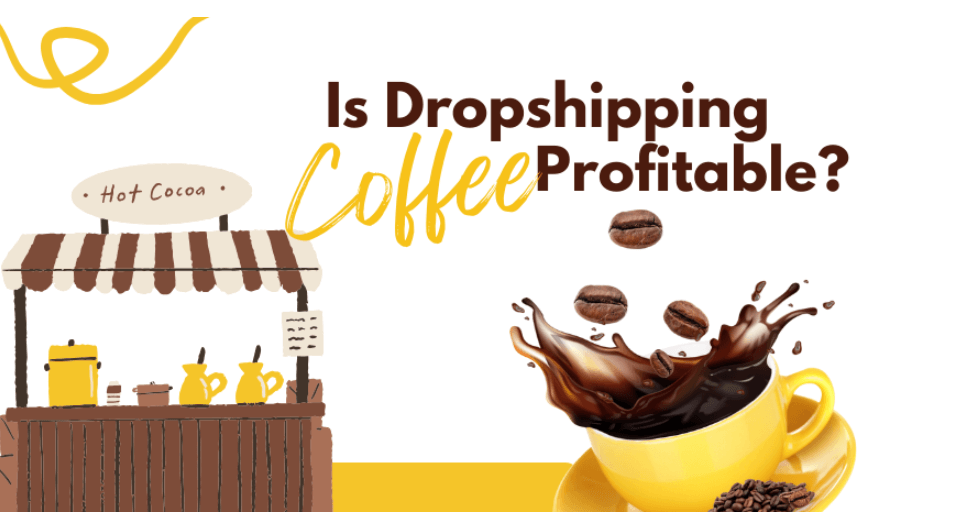
![Dropshipping General Store vs. Niche Store [2025 Data and Table]](https://www.dropshipman.com/wp-content/uploads/2025/03/general-vs-niche-store.png)
